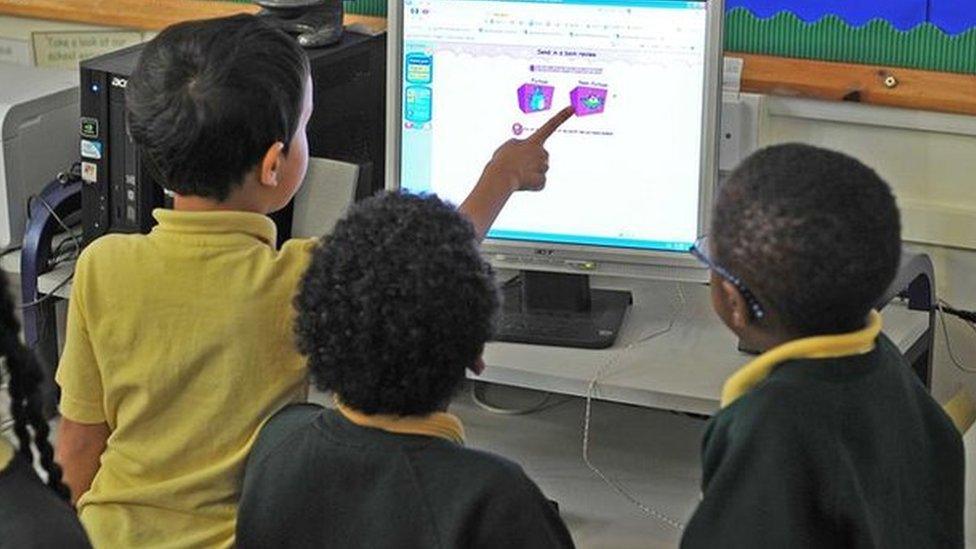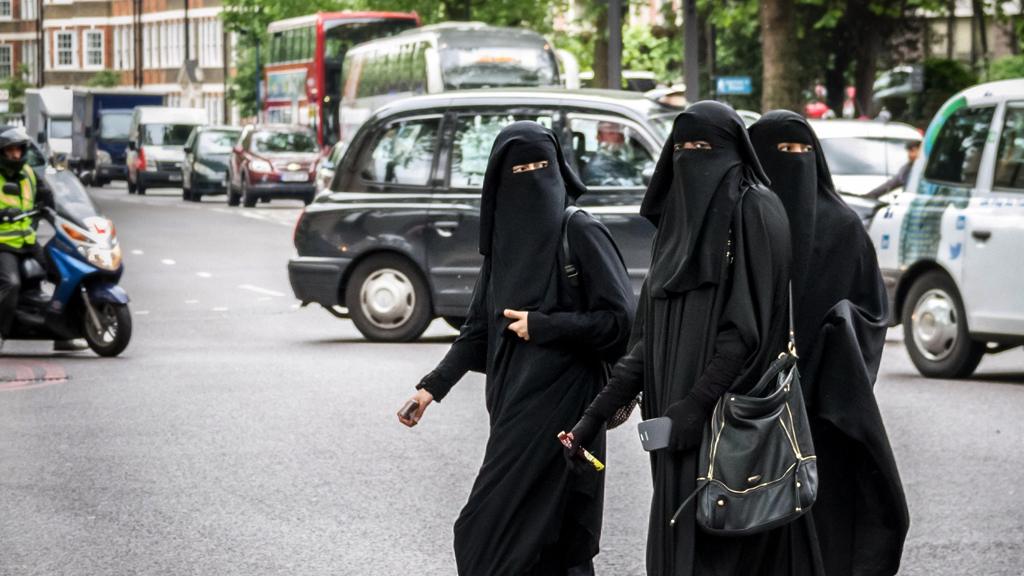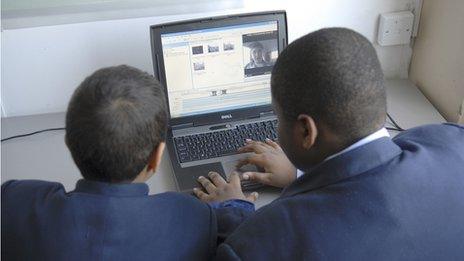Warning over segregation in England's schools
- Published

Thousands of state schools across England are segregated along ethnic or social grounds, according to research.
More than a quarter of primary and four in 10 secondary schools are ethnically divided, the social integration charity, The Challenge, found.
It says almost a third of primary and a quarter of secondary schools are segregated along socio-economic lines.
The Department for Education says all schools are expected to promote social integration and British values.
Researchers from The Challenge - working with the iCoCo Foundation and SchoolDash - measured how segregated a school was by comparing its numbers of white British pupils and those eligible for free school meals with those of the 10 schools closest to them.
They used official statistics for the years 2011 to 2016, examining more than 20,000 state schools.
Areas singled out for particular concern were:
Kirklees in West Yorkshire
Lancashire as a whole, but especially Blackburn with Darwen
Rochdale in Greater Manchester
Birmingham
The researchers regarded a school to be "segregated" if the proportion of ethnic minority pupils or pupils on free school meals was very different to the proportions at the neighbouring schools.
They found secondary schools were more likely to be segregated by ethnicity than socio-economic status, while primary schools were more likely to be segregated along socio-economic lines.
Primary faith schools were more ethnically segregated than those of no faith (29% against 25%) when compared with neighbouring schools, the study found.

Primary schools were more likely to be segregated socio-economically
Faith-based primary schools were also more likely to have a wealthier student population, with over one in four (27%) having significantly fewer pupils from more disadvantaged homes than other nearby schools; this compared with 17% of non-faith primaries.
Grammar schools - which Theresa May's government wants to expand - were heavily segregated by social background, the research found.
Some 98% of these selective schools had low numbers of poorer pupils, compared with their local schools, and none had pupil populations with high numbers of children eligible for free school meals.
The study also suggested that in some areas the situation was worsening - with primaries becoming more ethnically segregated over the past five years in more than half of the 150 areas examined.
'Anxiety and prejudice'
Jon Yates, director of The Challenge, said: "At a local and national level, government needs to commit to doing much more to reduce school segregation.
"We know that when communities live separately, anxiety and prejudice flourish, whereas when people from different backgrounds mix, it leads to more trusting and cohesive communities and opens up opportunities for social mobility.
"We urge local authorities, faith schools and academy chains to consider the impact admissions policies have upon neighbouring schools and put policies in place that encourage better school and community integration."
Responding to the findings, a Department for Education spokesman said: "We expect all schools to promote social integration and the fundamental British values of democracy, the rule of law, individual liberty, and mutual respect for different faiths and beliefs.
"Our free schools programme already encourages applications for free schools which aim to bring together pupils from different ethnic or faith groups, and our consultation, Schools That Work For Everyone, external, includes faith schools setting up twinning arrangements with others not of their religion so that pupils mix with children from different communities and backgrounds.
"But we know there is more to do. The Casey Review highlighted a number of issues around levels of ethnic segregation in school intakes in some areas of the country. The government is considering the review and its recommendations and will respond in due course."
- Published6 July 2015

- Published5 December 2016

- Published16 November 2011
